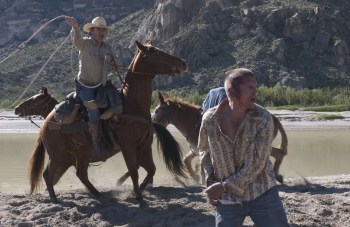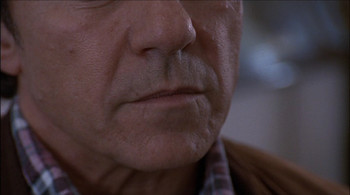The Clumsy Din of Chance
 The only connection that I could quickly find between screenwriter Guillermo Arriaga and novelist Paul Auster is that they had a public “conversation” earlier this year. (The promised subjects suggest at best a superficial relationship: “the art of filmmaking, writing, and – yes – Hollywood.” How pedestrian.) This is curious to me, because Arriaga’s script for the Tommy Lee Jones-directed The Three Burials of Melquiades Estrada is classic Auster.
The only connection that I could quickly find between screenwriter Guillermo Arriaga and novelist Paul Auster is that they had a public “conversation” earlier this year. (The promised subjects suggest at best a superficial relationship: “the art of filmmaking, writing, and – yes – Hollywood.” How pedestrian.) This is curious to me, because Arriaga’s script for the Tommy Lee Jones-directed The Three Burials of Melquiades Estrada is classic Auster.

 Smoke begins in Auggie Wren’s cigar shop with omniscient chatter about the Mets and ends in a deli with a made-up tale about how Auggie got his first camera. Almost everything in between is also bullshit, in the sense that its relationship with objective reality is utilitarian. We speak the truth when it suits our needs, but we shouldn’t let it get in the way of the story we’re trying to spin.
Smoke begins in Auggie Wren’s cigar shop with omniscient chatter about the Mets and ends in a deli with a made-up tale about how Auggie got his first camera. Almost everything in between is also bullshit, in the sense that its relationship with objective reality is utilitarian. We speak the truth when it suits our needs, but we shouldn’t let it get in the way of the story we’re trying to spin. Much like the Boston Red Sox, the movie Game 6 hauls so much baggage that triumph seems nearly impossible. It’s akin to
Much like the Boston Red Sox, the movie Game 6 hauls so much baggage that triumph seems nearly impossible. It’s akin to 